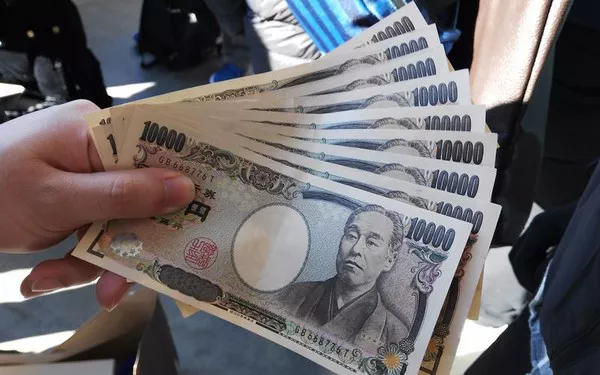In the vast realm of global financial markets, forex trading stands as a dynamic and intricate landscape where currencies from around the world interweave in a complex dance of supply and demand. Among these currencies, the Japanese Yen (JPY) holds a significant position, influencing the decisions of traders and investors worldwide. In this article, we delve into the current state of the Yen exchange rate, specifically examining the value of 1000000000 Yen in US dollars (USD). As we explore the nuances of forex trading, we will shed light on the factors influencing exchange rates and provide insights into the implications for traders navigating the intricacies of the market.
Understanding Forex Trading
Forex, short for foreign exchange, is the global marketplace for trading national currencies against one another. It is a decentralized market, meaning there is no central exchange, and transactions occur over-the-counter (OTC). The primary objective of forex trading is to profit from the fluctuations in currency values. Traders engage in buying and selling currencies based on their expectations of how these values will change over time.
The Current Yen Exchange Rate: 1000000000 Yen to USD
At the heart of forex trading lies the exchange rate, the price at which one currency can be exchanged for another. At the time of writing, the exchange rate for the Japanese Yen to US Dollar stands at 0.0068 JPY/USD. This means that 1000000000 Japanese Yen is equivalent to 6844050.00 USD. This exchange rate serves as a crucial benchmark for traders and investors looking to capitalize on the movements in the JPY/USD pair.
Factors Influencing Exchange Rates
Several factors contribute to the fluctuation of exchange rates, making forex trading a multifaceted arena. Understanding these factors is paramount for traders seeking to make informed decisions. Here are key elements influencing exchange rates:
1. Economic Indicators:
Economic indicators, such as GDP growth, employment rates, and inflation, play a pivotal role in shaping a country’s economic health. Positive economic data can strengthen a currency, while negative indicators may lead to depreciation.
2. Interest Rates:
Central banks use interest rates to control inflation and stimulate or cool down their economies. Higher interest rates attract foreign capital, leading to an appreciation of the currency.
3. Political Stability:
Political stability is a crucial factor in currency valuation. Countries with stable political environments are perceived as safer for investment, leading to a stronger currency.
4. Market Sentiment:
Traders’ perceptions and emotions contribute to market sentiment, influencing currency values. News, geopolitical events, and economic reports can trigger shifts in sentiment.
5. Trade Balances:
The balance of trade, reflecting the difference between a country’s exports and imports, affects currency values. A trade surplus strengthens a currency, while a deficit can lead to depreciation.
Strategies for Trading the JPY/USD Pair
With the current Yen exchange rate in mind, traders employ various strategies to navigate the forex market. Here are some common approaches when trading the JPY/USD pair:
See Also:200,000 Yen to USD
1. Carry Trading:
In carry trading, investors take advantage of interest rate differentials between currencies. If the interest rate in Japan is higher than in the United States, investors may borrow in USD to buy JPY, earning interest differentials.
2. Technical Analysis:
Traders use technical analysis to study historical price charts and identify patterns that may indicate future price movements. Popular technical indicators include moving averages, Bollinger Bands, and Relative Strength Index (RSI).
3. Fundamental Analysis:
Fundamental analysis involves evaluating economic indicators, monetary policies, and geopolitical events to make informed trading decisions. Traders assess economic data releases and central bank statements to anticipate market movements.
4. Risk Management:
Forex trading involves inherent risks, and effective risk management is crucial. Traders use stop-loss orders and position sizing strategies to mitigate potential losses and protect their capital.
The Role of Central Banks
Central banks play a pivotal role in influencing exchange rates through monetary policy decisions. The Bank of Japan (BoJ) and the Federal Reserve (Fed) are central players in shaping the Yen and US Dollar, respectively. Traders closely monitor policy statements, interest rate decisions, and intervention efforts by these central banks to gauge the future direction of the JPY/USD pair.
Future Outlook and Considerations
As traders assess the current Yen exchange rate and its implications, it’s essential to consider the ever-changing landscape of global finance. Geopolitical events, economic developments, and technological advancements can introduce volatility and reshape market dynamics. Keeping a pulse on these factors empowers traders to adapt their strategies and make informed decisions in the fast-paced world of forex trading.
Conclusion
In conclusion, the current Yen exchange rate of 1000000000 JPY to USD provides a snapshot of the dynamic nature of the forex market. Understanding the factors influencing exchange rates and adopting effective trading strategies are essential for navigating this intricate landscape. As traders continue to analyze and respond to market conditions, the ability to adapt and leverage valuable insights becomes paramount in the pursuit of success in forex trading.
Related Topics:
Current JPY Exchange Rate: 6000 Yen in US Dollars
Current JPY Exchange Rate: 1,000 Yen in US Dollars
Current YEN Exchange Rate: 1 JPY to USD



























